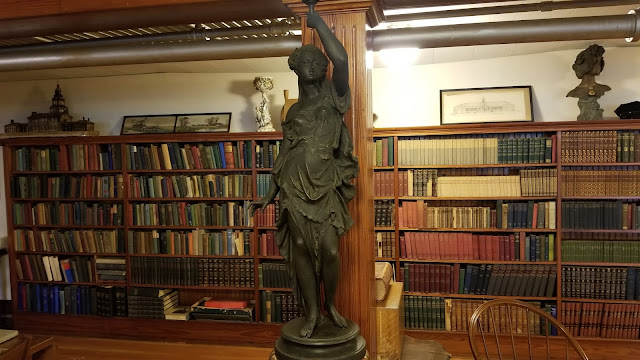Delong, who was already quite wealthy due to his inheritance, became a millionaire by inventing not the hook and eye, but merely by adding a "bump" to the hook and eye.
Frank Emerson Delong was born in 1865, one of the four children of Daniel & Jane Delong, who built and operated the Danville Foundry.
Frank worked in the foundry with his father, while attending public schools. The foundry included both a blacksmith, and a pattern shop. He attended the Kelso academy in Danville. Later he worked in New York City, in mining and engineering. From there he moved to Philadelphia, where he worked as an agent for a fire insurance firm.
His father died in 1889, and according to local lore, he was "no longer held to earning an honest living". In other words, he inherited a great deal of money. And so, with enough money to do as he pleased, Delong became an inventor.
Delong was a tinkerer, known for always having pliers in his pocket if not in his hands.
He patented a folding paper box, and an electronic stenograph machine, before modifying a simple device that made him his fortune. He added a hump to the hook and eye that held women's dresses closed.
Before his modification, hook and eyes were used on almost all clothing, but they did not always actually hold fast. There are two stories, and no way to tell if either is true.
One is that Delong noticed a servant girl, in his household, twisting wire together to hold her clothes together.
Another is that Delong's niece complained of her coats and dresses coming open, and her uncle came up with a solution for her.
In the 1920's, when the bob hairstyle became fashionable, Delong went on to create the bobby pin.
He was at one time one of the largest real estate owners in Philadelphia. He also owned a few farms and a large mansion around Washingtonville. In 1929, Frank Delong returned home to Blue Springs Farm near Washingtonville. There, he poured his fortune generously into the community.
He purchased an empty church, remodeled and updated it, and gave it to the community as a community hall. He built a race track, as swimming pool, and a school.
The DeLong memorial school cost 100,000 to build in 1930, and was completely funded by Delong. It was one of the most modern schools in the nation at it's time.
Originally Delong arranged for machines to come in and excavate the basement of the new school building, but as the depression hit his home town, he cancelled the machined, and hired newly unemployed locals to dig the basement by hand, paing them $3 a day - a very good wage for the 1930s.
Each year at Christmas time, Delong would bus children in and provide gifts and candy to everyone. He would have boxes of oranges shipped up from Florida. Every person received an orange, candy, and a pencil box, a tradition being revived in Washingtonville today, in Delong's memory.
But he was not just generous at Christmas time. After watching a local sandlot baseball game, he went to Danville and purchased bats, balls and gloves for the children.
Delong also created Delong Park near his Blue Springs farm, which he stocked with trout and opened to the public for picnics and fishing.
Frank Delong died in 1939, at age 74. He never married, and is buried in Laurel Hill Cemetery in Philadelphia. Local lore says he had some wire and a pair of pliers in his shirt pocket when he died.
The Delong Hook and Eye Company became part of the Scovill manufacuring company, which still make the hook eyes and bobby pins invented by Frank Delong.
Jane Delong Memorial Hall & Delong Museum
Named for Delong's mother, the museum downstairs holds a large portrait of the buildings namesake. (When open, access the museum by walking to the left of the building, it will be the first set of doors on the right, at ground level). For more information on hours, or using the facility, contacting the Columbia Montour Visitors Center may be your best bet. The museum has no online presence, no website nor social media. But like much of our area, it's a hidden gem, worth the visit, if you can get there.
It exists as a community hall yet today, with the annual Christmas parties being revived in recent years. The upstairs is used for events, as well as by the Riverstage Theatre Company for some of their performances.
The Charles Lindbergh display at the Jane Delong Memorial Hall
The truck on the left is one of the many items Frank Delong gifted to local children over the years.
=====================
====================
=============












Very nice. A splendid article. I like to design things. I've sold 100+ copyrights. Among my still covert designs are alternatives to the standard hook and eye. I was wanting something on De Long's 'hump', and came upon your site.
ReplyDelete